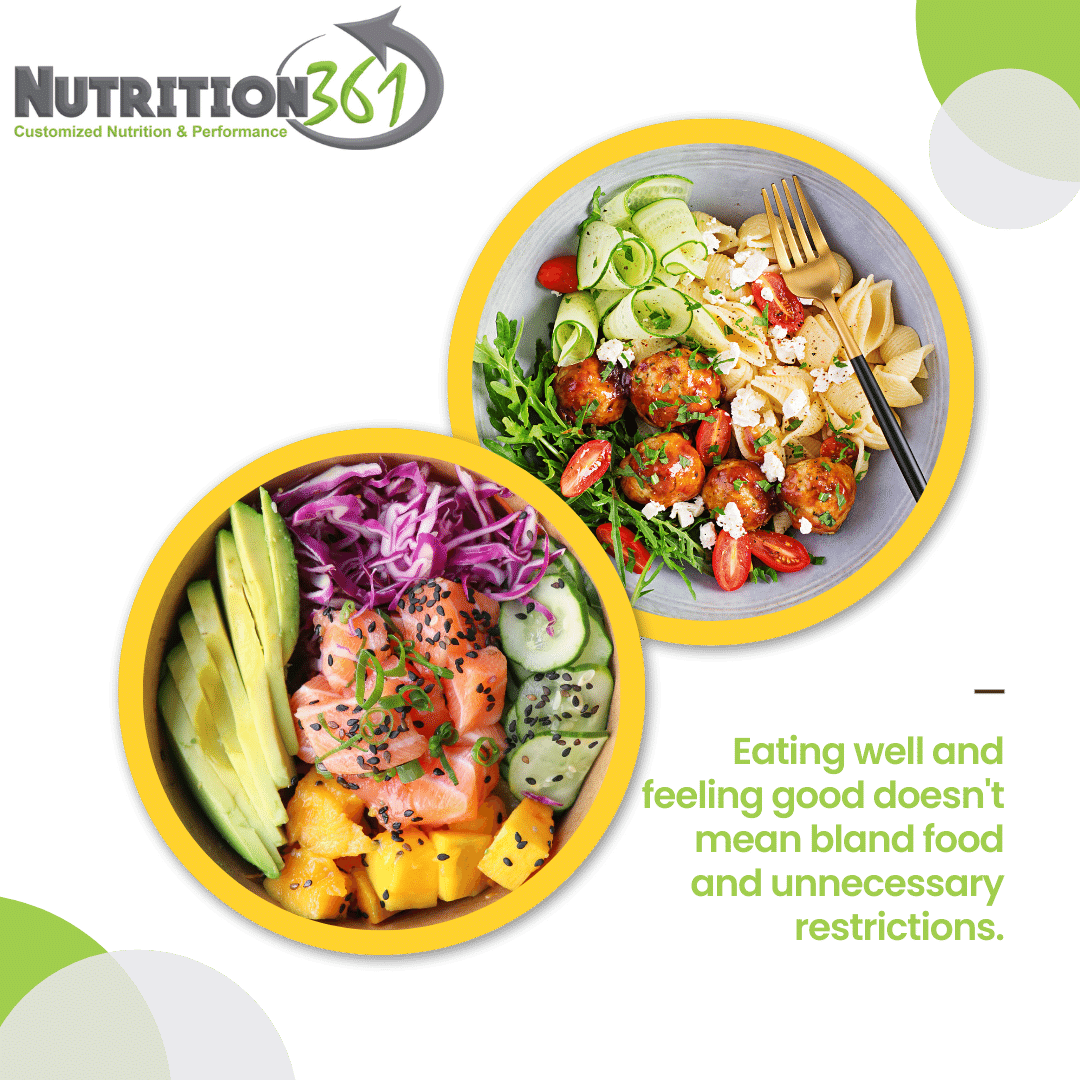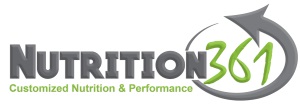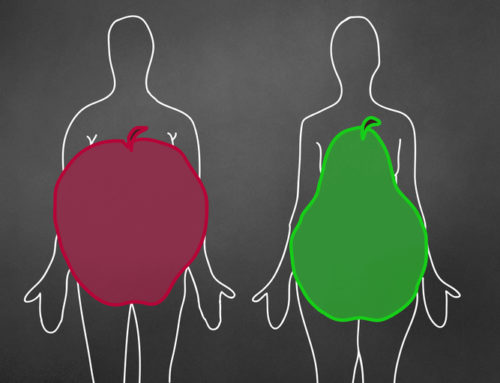TL;DR: Calculating your Personalized Macros for Flexible Dieting
Learn how to calculate your Total Daily Energy Expenditure (TDEE) and set the right macronutrient ratios to optimize nutrition and reach your fitness goals. Follow this guide to calculate your TDEE, set calorie goals, and determine your ideal macros. If you just want your numbers, there’s an easy to use custom macronutrient calculator.
What is Total Daily Energy Expenditure (TDEE)?
- TDEE: Total Daily Energy Expenditure (TDEE) is the total number of calories you burn in a day, including including basic bodily functions, physical activity, and digestion.
- Components: Resting Metabolic Rate (RMR), Exercise Activity (EA), Non-exercise Activity Thermogenesis (NEAT), and Thermic Effect of Food (TEF).
- Formula: TDEE = RMR + EA + NEAT + TEF
- Macro Calculation: Once you know your TDEE, you can set a calorie goal based on your weight management goals (deficit for weight loss, surplus for muscle gain).
- Step 1: Set protein intake (0.7-1g per pound of body weight),
- Step 2: Determine fat intake (0.75-1.25 grams per pound of body weight).
- Step 3: Allocate remaining calories to carbohydrates.
- Practical Example: For a 160 lbs. female with a light activity level, TDEE might be 2,240 calories/day. With a moderate deficit (20%), the calorie goal would be 1,792 calories/day. The macro breakdown could be 128 g protein, 64 g fat, and 176 g carbs.
Below I elaborate on methods for calculating TDEE, how to set a sustainable deficit, and setting your macros.
Method 1: Manual calculation, I show you how to calculate your TDEE, set a deficit or surplus, and set your macros.
- Pros: You learn the math behind everything.
- Cons: You have to do the math.
Method 2: Use my custom calorie calculator to get your TDEE, deficit numbers, and macros.
- Pros: You don’t have to do the math.
- Cons: You don’t learn the math behind it, most don’t care.

Diving Into TDEE and Macros
Achieving your fitness goals, whether it’s weight loss, muscle gain, or maintenance, hinges on understanding your TDEE and setting the correct macronutrient ratios. This comprehensive guide will help you accurately calculate your TDEE and macros, ensuring your diet aligns with your goals.
Understanding the Components of TDEE
- Resting Metabolic Rate (RMR): The calories burned at rest to maintain essential bodily functions like breathing, cell maintenance, and temperature regulation. RMR typically accounts for 60-75% of TDEE, though it can be ≤ 50% in very active individuals. A simple analogy is a car idling in park—it’s not moving, but it’s still burning fuel. Basal Metabolic Rate (BMR), often used interchangeably with RMR, is measured under stricter conditions and is usually within 10% of RMR.
- Exercise Activity (EA): Calories burned through intentional physical activities, such as workouts.
- Non-exercise Activity Thermogenesis (NEAT): Calories burned through everyday activities that aren’t exercise, like walking, standing, and fidgeting.
- Thermic Effect of Food (TEF): The energy required to digest and absorb food, which varies based on the macronutrient content of the food.
Energy Balance Equation:
TDEE = RMR + EA + NEAT + TEF
What are macros?
Macros, short for macronutrients, consist of protein, carbohydrates, and fats. Each macro plays a specific role in your body’s energy balance and overall health. Properly balancing these macros is essential for achieving your fitness goals.
Step 1: How to Calculate Your TDEE
Method 1: Online Calculators
Click here to use is my custom calculator. To calculate your TDEE, after filling in your info, choose maintain as your goal. Note this calorie calculator will also give you a few options for setting deficits or a surplus. The calculator also give you two options for the BMR formula, Mifflin-St. Jeor and Harris-Benedict Revised, both are validated equations.
Method 2: Manual Calculation
For those interested in the math, use this formula:
(RMR/NEAT factor + # of hours of exercise per week) x bodyweight (lbs.).
Using the data from the table below, we go with a RMR/NEAT factor of 10 plus 4 hours of exercise per week.
(10 + 4) x 215 lbs. = 3,010 calories/day
| Sample Individual | |
|---|---|
| Age | 37 |
| Gender | Male |
| Height | 5’10” (70″/178 cm) |
| Current weight | 215 lbs. (98 kg) |
| Bodyfat % | 28% |
| Goal bodyweight | 180 lbs. (82 kg) |
| Occupations/Other activity | Desk job/light |
| Exercise activity level | 3-4 hours/wk. |
| RMR / NEAT Factor | NEAT Level |
|---|---|
| 9 | Work at a desk job with low activity and sedentary (lots of sitting) outside of work. |
| 10 | Work at a desk job with low activity. Outside of work, activity is infrequent < 5k steps per day. |
| 11-13 | Workday consists of consistent periods of time on your feet and walking. Outside of work, moderate amount of activity, such as housework, walking dog, etc. ~6-10k steps per day. |
| 14-15 | Work consists of physical labor (ex: carpenter) and outside of work activity is high. >10k steps per day. |
Step 1.2: Setting the Deficit
I’m assuming most here are looking to lose bodyfat, so we are working on this assumption. If you’re interested in gaining weight, check out my article How to Bulk Up: Guide to Building Muscle while Minimizing Excess Body Fat.
- If you’re using the macro calculator, you have 2 options for a deficit, ‘Lose Weight’ & ‘Aggressive Weight Loss’. These represent a moderate and aggressive deficit respectively.
- If you’re following method 2, you need to determine your deficit. The table below outlines the pros and cons of deficit levels.
Example:
TDEE x (1 – deficit%/100)
Using a moderate 20% energy deficit.
3010 x (1 – .2) = 2408 Calories
| Energy Deficits | % Below maintenance level | Pros | Cons |
|---|---|---|---|
| Conservative | 10-15% | Minimize muscle loss and perhaps facilitate building depending upon starting point. Easy to maintain. | Easy to fall back into maintenance with a slip up or mismeasurement, requires greater precision. |
| Moderate | >15-25% | Good balance of fat loss, maintenance of lean mass, and sustainability. | Slower results than an aggressive approach and harder to maintain than a conservative approach. |
| Aggressive | >25% | Faster results which can lead to greater motivation. | Likely to lose more lean mass. Hard to sustain. Performance may suffer. |
Can you simultaneously lose body fat and build muscle?
First, ask yourself if you’ve ever consistently consumed the optimal amount of protein for muscle growth while also sticking to a resistance training routine? For most people, the answer is no. Therefore, when you hear a one size fits all statement that you can’t build muscle mass and lose bodyfat, understand that it is not the case for many people as your starting point matters. Also, the size of the deficit matters as outlined in the table comparing deficits. At some point this will become true, however when it occurs varies based on starting point.
Step 2: How to Calculate Your Macros
Once you have your TDEE, the next step is setting your macronutrient ratios to align with your specific goals. Note if you used the custom macro calculator, you already have your macros.
Key Takeaways:
Focus on protein for muscle preservation, fats for hormonal health, and carbs for performance. Adjust based on your preference for fat or carbs.
Step 2.1: Set Your Protein Intake
Why Protein Matters:
- Muscle Preservation: Helps maintain lean body mass during weight loss.
- Satiety: Enhances satiety by slowing digestion and interaction with satiety signals.
- High Thermic Effect: Burns more calories during digestion and assimilation (~25%) compared to fats (~3%) and carbs (~6%).
Recommended Protein Intake:
- 0.7 – 1 grams of protein per pound of body weight (1.6 – 2.2 grams per kilogram) per day.
Example 215 lbs.:
215 * 0.8 = 172 grams of protein / day.
172 g x 4 kcal/g = 688 Calories
Practical Tips:
If you have a relatively high bodyfat percentage (males >25%; females >35%), staying on the low end of the recommended range is warranted. Otherwise you’ll crowd out carbohydrate and fat intake, which makes adherence difficult and affects overall nutrient density.
Step 2.2: Set Your Fat Intake
Why Fats Are Important:
- Hormonal Health: Supports hormone production and cell membrane functions, including the blood-brain barrier.
- Nutrient Absorption: Necessary for absorbing fat-soluble vitamins (A, D, E, K).
- Nutrient & Energy Density: Provides a concentrated energy source. Many fat rich foods are also satiating and nutrient dense (Ex: almonds, olives, etc.)
Recommended Fat Intake:
- 0.35-0.5 grams of fat per pound of bodyweight (0.77 – 1.98 grams per kilogram) per day.
Example 215 lbs.:
0.4 x 215= 86 g of fat
86 g x 9 kcal/g = 774 Calories
Practical Tips:
If you prefer a diet richer in fat than carbs, you can adjust to the high end of the range and vice versa.
Key Takeaways:
- Aim for 0.35-0.5 grams of fat per pound of body weight.
- Include nutrient-dense fat sources like olive oil, nuts, and avocados.
- Adjust fat intake based on personal preference for carbs or fat.
Step 2.3: Calculate Your Carbohydrate Intake
Why Carbs Matter:
- Improve Performance: Fuels workouts and supports daily energy needs.
- Nutrient-Dense: Provides essential vitamins, minerals, and fiber.
- Increased Adherence: Putting aside the unnecessary food avoidance that is currently popular in the form of carbs, a keto diet (<50 g carbs/day) is not sustainable for the vast majority of people. Low carbohydrate diets closer to 130 g/day are more likely to be sustained.
- Mood and Cognitive Function: Supports mental health and cognitive function.
Calculating Carbs:
Total Calories – (Calories from Protein + Calories from Fat) = Calories from Carbs Calories from Carbs / 4 = Grams of Carbs
Example:
2408 – (688 + 774) = 946 Calories
946/4 = 237 grams of carbohydrates
Practical Tips:
If you prefer a diet richer in carbs than fat, you can adjust to the low end of the range for fat intake and vice versa.
Macro-Friendly Food Sources
Here are examples of nutrient-dense foods that can help you hit your daily macro targets:
| Food Source | Serving Size | Calories | Protein | Carbs | Fat |
| Protein Sources | |||||
| Chicken breast | 3 oz (85g) | 140 | 26g | 0g | 3g |
| Salmon | 4 oz (113g) | 207 | 23g | 0g | 13g |
| Greek yogurt | 1 cup (245g) | 150 | 20g | 9g | 0g |
| Tofu | 3.5 oz (100g) | 76 | 8g | 2g | 5g |
| Whey protein | 1 scoop (30g) | 120 | 24g | 2g | 1g |
| Carb Sources | |||||
| Sweet potatoes | 1 medium (150g) | 130 | 2g | 30g | 0g |
| Quinoa | 1/2 cup cooked (92g) | 111 | 4g | 20g | 2g |
| Brown rice | 1 cup cooked (195g) | 218 | 5g | 45g | 2g |
| Oats | 1/2 cup dry (40g) | 150 | 5g | 27g | 3g |
| Lentils | 1/2 cup cooked (99g) | 115 | 9g | 20g | 0g |
| Fat Sources | |||||
| Olive oil | 1 tbsp (14g) | 120 | 0g | 0g | 14g |
| Avocados | 1/2 medium (68g) | 114 | 1g | 6g | 10g |
| Almonds | 1 oz (28g) | 161 | 6g | 6g | 14g |
| Walnuts | 1 oz (28g) | 185 | 4g | 4g | 18g |
| Peanut butter | 2 tbsp (32g) | 190 | 8g | 6g | 16g |
For a comprehensive guide with examples, tables, and personalized tips, download the full Ultimate Macro Guide.
Step 3: Adjust Your Macro Intake Based on Progress
Consistency and adaptability are crucial for reaching your goals. Track your progress and adjust your macros as needed based on your body’s response.
Practical Tips
- Use Tracking Tools: Apps like MyFitnessPal can help you monitor your daily macro intake.
- Regular Assessments: Weigh yourself weekly and take measurements to track progress.
- Stay Flexible: Allow for adjustments to accommodate changes in activity levels or goals.
- What You Eat will Determine How Much You Eat: Aim to get at least 80% of your daily energy from nutrient-dense sources for overall health and well-being.
- Patience and Honesty with yourself: Obsessing over the scale will not serve you well, in the short term it can be volatile. Try to give yourself at least 3 weeks to see how you do with your macros before adjusting.
- Common mistake: Blowing your deficit over the weekend.
- Look for anecdotal signals, you should experience some hunger consistently if you’re in a deficit.
Comparing Methods:
Using Method 1 we get the following data
Using our sample individuals info: Moderate (3-4 h/wk.), Mifflin-St. Jeor, Lose weight
Calories per day: 2512
Carbohydrates: 266 g
Protein: 171 g
Fat: 81 g
Using method 2:
Again using our sample individuals data and going with a 20% energy deficit.
Calories per day: 2408
Carbohydrates: 237 g
Protein: 172 g
Fat: 86 g
As you can see the numbers are fairly close. You could do this for your own numbers to validate each method with your own data.
Conclusion: Mastering TDEE and Macros for Optimal Results
Understanding how to calculate your TDEE and set the right macronutrient ratios is fundamental to achieving your fitness goals. By following this guide, you can create a personalized nutrition plan that supports your weight management, muscle gain, or overall health objectives.
Ready to take control of your nutrition?
Losing weight involves more than just understanding thermodynamics. I steer clear of pigeonholing clients into generic diets, focusing instead on addressing the underlying barriers encountered in the past. The most important thing for true change comes from reaching the core of the issue and building new habits. I place significant emphasis on working with clients on their daily habits, as these are the stepping stones to achieving goals. Embracing this approach brings immense satisfaction and joy in the journey toward your objectives.


